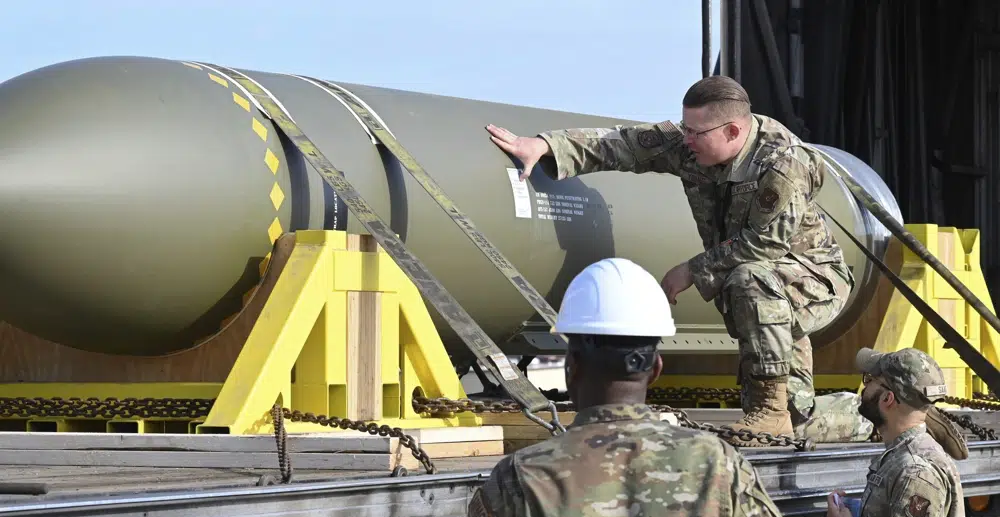US bomb designed to hit targets like Iran underground nuclear sites briefly reappears amid tensions

DUBAI, United Arab Emirates (AP) — As tensions with Iran have escalated over its nuclear program, the U.S. military this month posted pictures of a powerful bomb designed to penetrate deep into the earth and destroy underground facilities that could be used to enrich uranium.
DUBAI, United Arab Emirates (AP) — As tensions with Iran have escalated over its nuclear program, the U.S. military this month posted pictures of a powerful bomb designed to penetrate deep into the earth and destroy underground facilities that could be used to enrich uranium.
The U.S. Air Force on May 2 released rare images of the weapon, the GBU-57, known as the “Massive Ordnance Penetrator.” Then it took the photos down — apparently because the photographs revealed sensitive details about the weapon’s composition and punch. The publication of the photographs comes as The Associated Press reported that Iran is making steady progress in constructing a nuclear facility that is likely beyond the range of the GBU-57, which is considered the U.S. military last-ditch weapon to take out underground bunkers. The U.S. developed the Massive Ordnance Penetrator in the 2000s as concerns grew over Iran hardening its nuclear sites by building them underground.
The Air Force posted images of the bombs on the Facebook page for Whiteman Air Force Base in Missouri. The base is home to the fleet of B-2 stealth bombers, the only aircraft that can deploy the bomb.
In a caption, the base said it had received two Massive Ordnance Penetrator bombs so a munitions squadron there could “test their performance.”
It is not the first time the Air Force has published photos and videos of the bomb that coincided with rising acrimony with Tehran over its nuclear program. In 2019, the U.S. military released a video of a B-2 bomber dropping two of the bombs. The Air Force did not respond to requests for comment on why it posted — and removed — the most recent set of photos. The AP reported on Monday that satellite imagery from Planet Labs PBC reveals Tehran has been digging tunnels in the mountain near the Natanz nuclear site in central Iran. Excavation mounds at the site suggest the facility could be between 80 meters (260 feet) and 100 meters (328 feet) under the ground, according to the experts and AP’s analysis.
Experts say the size of the construction project indicates Iran likely would be able to use the underground facility to enrich uranium as well — not just to build centrifuges. Those tube-shaped centrifuges, arranged in large cascades of dozens of machines, rapidly spin uranium gas to enrich it. Additional machines would allow Iran to quickly enrich uranium under the mountain’s protection.